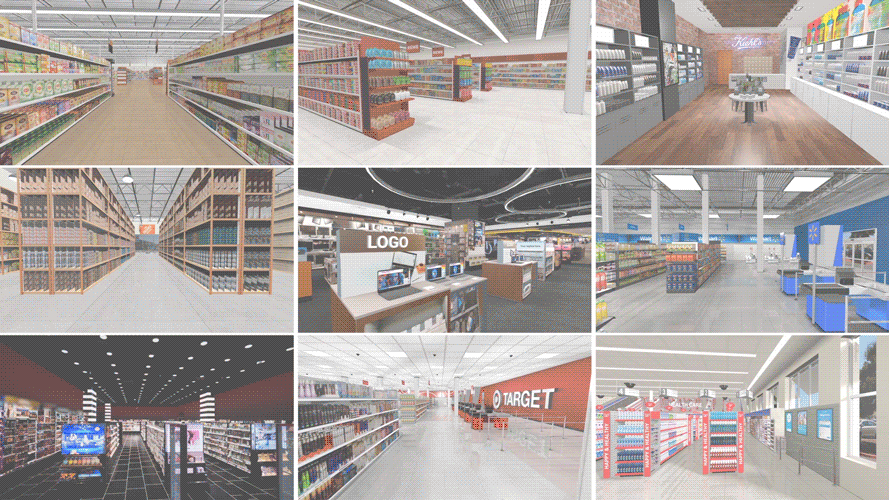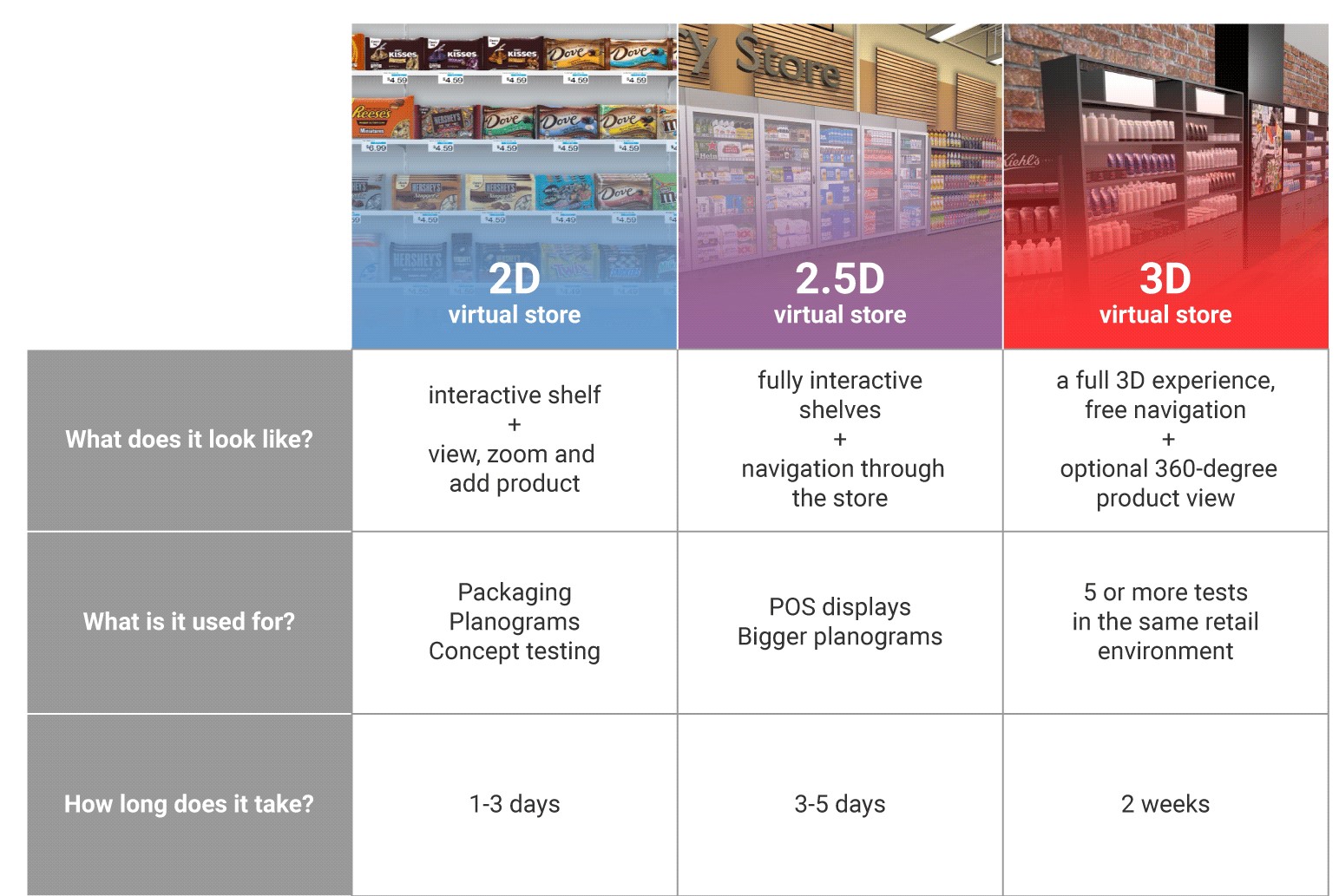Editor’s note: Jonathan Asher is executive vice president, and Bojana Berisavljevic is insights manager at research firm EyeSee. This blog is based on Asher and Berisavljevic’s conversation that took place during EyeSee’s webinar on virtual stores.
During the times when central location testing is not a viable option, remote testing solutions that provide cost-efficient and fast findings, and boast high result validity, might be a good choice for brands. Apart from providing stable results even in changed circumstances, virtual shopping has a high correlation with real shopping behavior – as much as 0.8-0.9.
Even though it’s been gaining traction in recent years, what makes context testing so imperative now is the inability to conduct in-person research. An accompanied shopping trip is great for qual insights into what the shopping process looks like on a smaller scale. Still, with a bigger quant sample, in the right (virtual) context and void of variations that might spoil your data, you can be more confident that your results are reliable.
In an average supermarket that contains around 50,000 SKUs, consumers spend only 5 seconds per aisle, which is indicative of why it’s so important to test everything in a realistic context. If consumers miss your POS display, SRP or a new pack in the environment, they won’t be bought.
In-context remote testing options, such as virtual stores, provide a realistic environment for conducting consumer research. Although virtual shopping is not identical to shopping in front of a real shelf, implicit studies produce results that are less biased and more impartial than verbal self-reported data, which is often saturated with personal inclinations. When compared to other solutions, some of which are even more advanced in the tech domain – such as using an immersive VR headset or in-person eye-tracking on a real size shelf – virtual shopping hits the sweet spot of high predictability and high scalability.

Setting up a shopper study using virtual stores
Depending on the research question, the testing levels of virtual stores – 2D, 2.5D and 3D environment – can provide highly reliable results.

Virtual shopping is most effective when combined with other methods. Standout and visibility data is the key in shopper research, which is why we recommend combining eye-tracking with virtual stores to gauge if products are noticed in their environment – a necessary prerequisite to being bought. Additionally, we suggest coupling virtual shopping studies with traditional surveys and reaction time measurement – a tool for assessing attributes and seeing how strong the connections between the product and some descriptors are.
The added value of virtual shopping as a method is that it collects behavioral shopping-specific KPIs – sales uplift, the share of shoppers, value share and several others. Since it uses a monadic design on a large sample (from 300 to 1,000 respondents per cell), these results can be compared to different benchmarks – that of your brand’s other products, your competitor’s performance and a benchmark database.
Virtual shopping is a versatile tool that complements many study types. While it is first and foremost a shopper marketing mainstay, it is also useful when running tests of a new flyer, a TVC or long-form content such as branded videos, as it can measure the impact of tested material on the uplift in sales.
The question that is on everyone’s minds right now is if you should keep on testing during a period of shaken consumer sentiment. We put virtual shopping to the test and compared data collected in April 2020 to data from 2019 to see if our findings held up. We found that the results and KPIs remained stable. If you used virtual stores before the crisis, you can continue to rely on it now, but make sure to repeat findings after a while, or include a sentiment-based split in your sample, to ensure greater result accuracy.
Actionable insights
Context testing has been growing in relevance for years – with the COVID-19 crisis, we will probably notice a more intense switch to remote testing in virtual environments.
Validation of virtual store results are high – 0.8 compared to that of 0.6 of surveys. In addition, the findings are stable, even during the crisis. Just be sure to choose the right type of virtual store for your specific research objectives. You don’t always need the most advanced or the most expensive solution for actionable and impactful insights.
